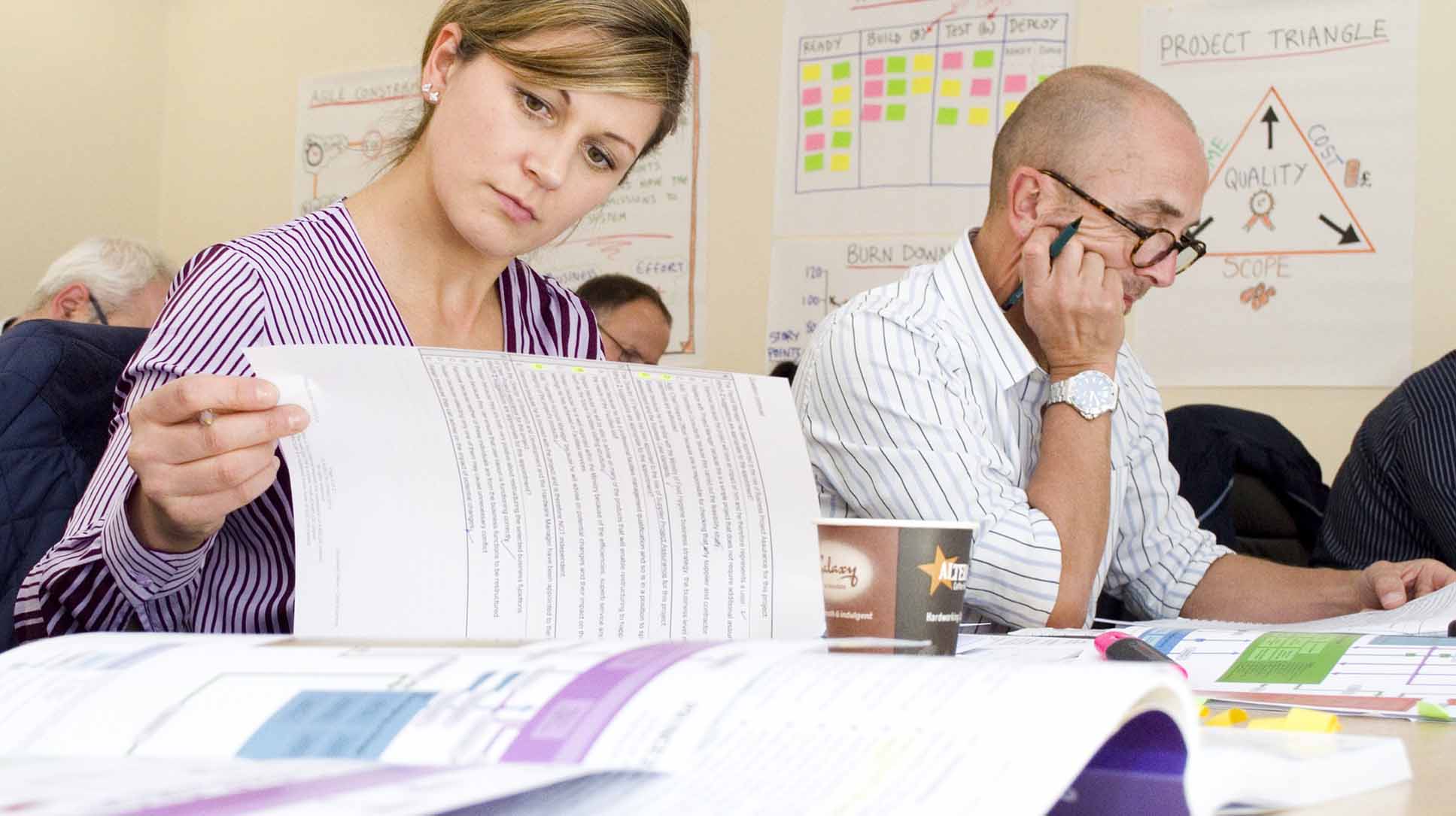Project Assurance Resources
Understanding Project Governance
The information in this guide is intended for general purposes only. For more specific guidance around your organisation’s projects, please get in touch with our team.
In this section, you will find:
- Governance sets the rules of the game (or project)
- Building your governance structure
- Establishing a reporting framework
- Defining roles and responsibilities within the project
- Keeping track of and managing risk to the project
- Establishing measures of success
- Meeting Cadences
- Informing the quality assurance approach
- Where to next?
Project governance is one of those necessary business practises that is really only felt when it’s not there. While some may find the ‘admin’ and structure around a project much less exciting than the delivery of the project itself, the lack of effective governance can make it very hard to know where a project is at, and will quickly derail progress when no one is clear as to how to proceed.
In this guide, we talk about what governance for a project involves and why it’s so valuable to incorporate to any organisational initiative.
Governance sets the rules of the game (or project)
So what do we mean by ‘rules’? Governance could be described as a framework that informs oversight, reporting, communication, responsibilities and documentation. Governance is less an artefact than it is a set of best practises. By having the approach of project reporting and delivery laid out clearly, there are fewer roadblocks to deal with later.
Project success is much more than delivery teams doing good work. If the lines of reporting and communication aren’t in place, how can these teams expect to get buy-in or support through periods of adversity? Effective governance doesn’t slow a project down, it empowers it to progress quicker.

Building your governance structure
Governance over an initiative can be as simple as a Sponsor or senior leader making decisions about the direction of the work, or as complex as a multi-layered decision hierarchy with escalation points and tolerances and sub-groups and a kitchen sink for good measure.
Simple is usually better – we see too many projects with overly complex governance structures which slow down decision making and cause the work to grind to a halt. But we also see projects where governance is absent and people are off working on tangents and the project never really gets delivered.
So the Goldilocks principle applies to your governance – not too much and not too little. A couple of key senior leaders who have skin in the game and can make decisions on behalf of the business is far better than a two-tiered governance and advisory structure with a dozen people who don’t really know why they’re there and what decisions they should be making.
Your structure needs a few important things:
- Someone who is accountable for the decisions that need to be made to keep an initiative moving forward, and who is senior enough to make those decisions
- A small group of some other people who support the someone make those decisions, who are experienced enough to know what kinds of questions they should be asking and answering
- An information flow that gives that accountable person and other people the kind of information they need to make the decisions.
Get those things right and you will have an effective governance structure.
Establishing a reporting framework
If the steering committee or senior leader responsible for overseeing the establishment of a project hasn’t initiated proper reporting structures, there’s no visibility of what’s happening and where the issues may be. Where reporting lacks, information finds other less constructive ways of reaching leadership – often without the context it needs to be acted upon appropriately.
The reporting framework will also determine exactly who is responsible for reporting – this may be split up across different people to feed in information, or there may be a report for the steering committee, who prepare a higher level version for a senior leadership team.
Defining roles and responsibilities within the project
Roles and responsibilities also extend to jobs like reporting, day to project management, steering committee members, programme manager and even those at the executive level who ‘own’ the strategic imperative the project is associated with.
Having clear, commonly understood, and well defined roles and responsibilities keeps everyone on point and aligned.
Keeping track of and managing risk to the project
While an organisation’s project management framework might outline what constitutes a risk and how to properly capture it within a risk register, the art of risk management is ensuring risks are owned at the right level and that those with the most ability to mitigate a risk are the ones implementing preventative actions.
Governance’s role in risk management is two-fold – it needs to know what the overall risk profile of a project looks like so that it can understand how much risk an organisation is taking on. But it also needs to be actively involved in avoiding those risks coming to pass. Too often we see all risks in a project owned by the project manager, and it’s on their shoulders to manage all the triggering events that lead up to a risk. That’s lazy governance. The Steering Committee, or Project Board, or whatever the governance group are named, are the people who organisationally have the authority and span of control to mitigate risks. So it needs to be a joint effort between the project teams and its governance to keep an eye on the risks and prevent bad things from happening to the project.
Establishing measures of success
The governance function needs to be clear on what success looks like for the project as a whole. These key performance indicators can include delivery to an agreed timeline or cost envelope (that’s the traditional measure) or achieving the expected level of benefits or stakeholder satisfaction with the project outcomes (that’s a bit more nuanced). Whatever success looks like for an organisation though, that must be defined upfront and agreed, so that the project team knows what they’re aiming for and so that progress can be tracked as the project moves along. And these are not set and forget measures either. It’s governance’s role to continually test the project against the KPIs to ensure it’s moving in the right direction, and so that if something goes awry that will impact on success, interventions can be made soon enough to get the project back on track.

Meeting Cadences
Good governance won’t just determine a rhythm of meetings that best services the project’s outcomes, but will balance the needs of the project leadership, stakeholder and SLT levels as well to ensure information is shared in an efficient and effective manner. We see many projects where the project leadership team are attending two or three different governance forums throughout a month, each with their own information and reporting requirements. Again, the Goldilocks principle is our friend here. If you can’t get away from multiple different governance meetings, at least try to work with your governance members to align reporting needs. The machinery of governance takes a lot of feeding, all of which costs time and money that some projects don’t have to spare.
But, if there’s no set pace at which a project presents to its governance group, there can be a huge amount of time between meetings, leaving issues to run longer than necessary and sometimes add undue risk to the project’s success.
Informing the quality assurance approach
Dealing with issues throughout a project is not about avoiding them, but having visibility and plans for them if they do arise. As part of strong governance, risk assessment and mitigation strategies help milestones be set realistically and be met.
Getting in front of threats that could derail completion of a stage of your project may take some more time before the project commences, but the benefits will become quickly apparent when things are kept on track.
Where to next?
Read our other project resources:
Setting project milestones
Staying on track isn’t just a matter of delivering on time, but controlling costs too. We offer some useful tips when setting project milestones.
Learn More >>
How to avoid project failure
Project failure is something every organisation wants to avoid. We touch on some of the approaches to preventing things going wrong.
Learn More >>
Identifying project risks
Risks exist in all organisations. It’s how we prepare, adapt and navigate these risks that makes projects successful. Read our guide on spotting and dealing with risks to a project.
Learn More >>
Understanding project governance
All the structure and processes around how a project is delivered can mean the difference between a successful project or not. Learn what governance is and how it can help.
Learn More >>
What causes scope creep
Scope creep affects every project manager or project team member at some point in their career. In this guide, we explore what some of the causes are.
Learn More >>
Managing project stakeholders
In this guide, we offer some tips for managing stakeholders to keep relationships positive and projects on track.
Latest Project Assurance Articles
Preparing the business for a project
Perhaps you’re a business relatively new to the world of projects. Or maybe the business has gone through significant changes that create somewhat of a ‘clean slate’, meaning all processes and practices are up for improvement. You could also be an organisation that is delivering projects regularly but have a sense that they are harder to get through than they should be.
Are We Ready To Go Live? Considerations for Project leaders
Go-live – is there anything quite as scary for a project manager and steering committee than to commit to finally releasing your project into the wild? No matter how many times a business delivers projects, that moment of ‘going live’ always comes with a few worries.
5 Ways To Make Projects Smoother Sailing in 2022
In this article, we’ve picked five ways organisations can help projects to be delivered to reduce the likelihood of time, budget or people issues.
Insights From Our 3 Minute Project Health Check Responses in 2021
Over 2021 we collected responses to our 3 Minute Project Health Check and have come away with some really fascinating statistics on the state of NZ projects.
The Biggest Barriers To A Successful Organisational Transformation
In this article, we’ll offer some of the common barriers we’ve seen in our work with organisations during moments of major transition.
8 Mistakes New Project Managers Make And The Lessons They Learn
Being a project manager isn’t easy. While a tremendously gratifying career path, there are challenges that a PM faces that can catch the inexperienced off guard.
Explore our other QA services
Get In Touch
IQANZ Limited
Level 2, PSA House
11 Aurora Terrace
PO Box 11-757 Wellington,
New Zealand
04 473 4340
info@iqanz.com


















